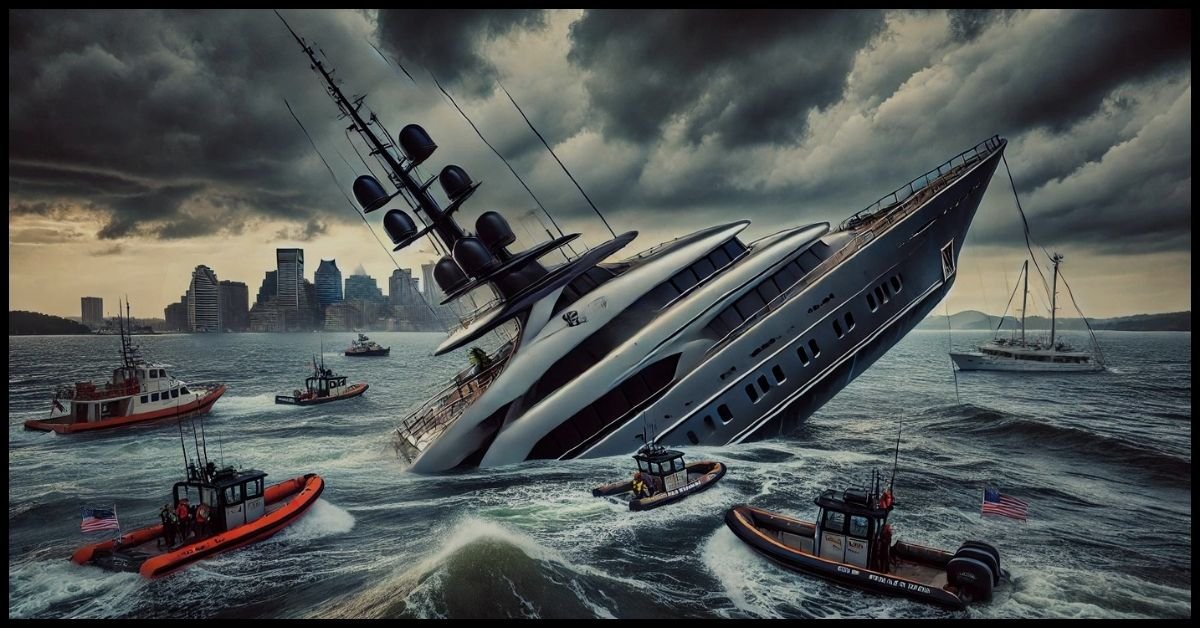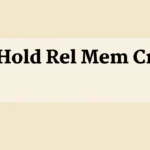Contents
Introduction The Incident $8 Million Yacht Capsizes Near Annapolis
A scene of serene luxury turned chaotic when an $8 million yacht capsized near Annapolis, sending shockwaves through the maritime community. Picture this: a sleek vessel, once gliding gracefully on calm waters, now lies at the bottom of the Chesapeake Bay. Eyewitnesses were in disbelief as they watched the majestic craft succumb to unforeseen circumstances.
This incident raises important questions about safety in an industry often synonymous with opulence and adventure. What happened that day? And what does it mean for yacht owners everywhere? Let’s dive deeper into this alarming event and its implications for luxury yachting enthusiasts.
Background on the Yacht and Its Owner
The stunning $8 million yacht named “Serenity” was a symbol of luxury and adventure. Crafted by one of the leading luxury shipbuilders, it boasted sleek lines and state-of-the-art technology.
Its owner, an affluent entrepreneur known for his ventures in tech startups, had dreams of sailing the open seas. He often shared tales of escapades with friends on board while sipping champagne under starlit skies.
“Serenity” wasn’t just a boat; it represented freedom and success. With lavish interiors designed by renowned decorators, every inch echoed sophistication.
However, this luxurious lifestyle comes with responsibilities easily overlooked amidst indulgence. The allure of yachting can often mask potential dangers lurking just beneath the surface.
Causes of the Capsizing
The $8 million yacht’s capsizing near Annapolis has raised serious concerns about maritime safety. Initial assessments suggest that adverse weather conditions played a pivotal role. High winds and sudden storms can create treacherous waves, even for well-built vessels.
Another factor is human error. Navigational misjudgments or improper weight distribution onboard are common culprits in such incidents. A momentary lapse in decision-making can spell disaster on the water.
Mechanical failure also cannot be overlooked. Even luxury yachts require regular maintenance to ensure all systems function correctly. An unnoticed issue could lead to catastrophic consequences during critical moments.
Overcrowding poses risks that many owners may need to be aware of. Each vessel has limitations, and exceeding them can compromise stability and control, leading to vulnerable situations on the open sea.
Implications for the Luxury Yachting Industry
The capsizing of an $8 million yacht near Annapolis sends shockwaves through the luxury yachting industry. Such incidents highlight vulnerabilities that even high-end vessels face.
Potential buyers may hesitate, weighing safety against opulence. The allure of owning a luxury yacht can diminish when risks become apparent. This could lead to increased demand for safety features and enhancements in design.
Insurance rates might also rise as companies reassess risk factors associated with yachts. Owners may find themselves investing more in protective measures and training.
Reputation is everything in this market, so brands must act swiftly to restore confidence among clientele. Transparency about safety protocols may soon become a crucial selling point.
As awareness grows, the industry might see innovation focused on stability and emergency preparedness rather than aesthetics or speed.
Safety Regulations and Precautions for Yacht Owners
Yacht ownership comes with great joy, but it also carries significant responsibilities. Safety regulations should always be at the forefront of a yacht owner’s mind.
Regular inspections are crucial. Ensuring life jackets, flares, and fire extinguishers are in good condition can make all the difference in an emergency.
Training for owners and crew is not just recommended; it’s essential. Familiarizing everyone with safety protocols ensures swift action when needed.
Additionally, keeping current on local maritime laws can help avoid costly penalties or accidents.
Investing in proper navigation equipment enhances safety while cruising unfamiliar waters. GPS systems and radar technology provide vital information that helps prevent mishaps.
Establishing a solid communication plan boosts readiness during unexpected situations. Having reliable ways to contact authorities or emergency services is critical for peace of mind at sea.
Lessons Learned and Future Safety Measures
The $8 million yacht’s capsize is a stark reminder of the unpredictable nature of maritime activities. It highlights the necessity for yacht owners to prioritize safety over luxury.
Education is crucial. Owners and crews must regularly train on emergency procedures, navigation, and weather assessment. Knowledge can make all the difference in critical situations.
Investing in advanced technology plays a vital role, too. Modern yachts should be equipped with reliable tracking systems and real-time weather updates, significantly enhancing situational awareness.
Regular vessel inspections must be noticed. Routine checks ensure that all equipment functions correctly, reducing risks associated with mechanical failure.
Fostering a culture of safety onboard is imperative. Every crew member should feel empowered to voice concerns or suggest improvements without hesitation. Together, these actions could reshape standards within the luxury yachting sector.
Conclusion:
Luxury yachting is often seen as a symbol of success and freedom. However, the recent capsizing incident near Annapolis is a stark reminder of the risks inherent in this lifestyle. An $8 Million Yacht Capsizes Near Annapolis, once a beacon of luxury, now rests on the seabed, highlighting how quickly fortunes can change.
This incident could shake the confidence of potential buyers within the luxury sector. The allure of owning a magnificent vessel comes with responsibilities that cannot be overlooked. As interest in luxury yachting grows, so must awareness of safety measures and regulations.
The events surrounding this tragic occurrence present an opportunity for reflection among yacht owners and operators alike. Emphasis must be placed on lavish features and robust safety practices—ensuring smooth sailing from dockside to deep waters.
As we navigate these challenges together, it becomes crucial for industry stakeholders to foster dialogue about best practices and improvements in safety protocols. Only then can we strive to ensure that every adventure at sea remains luxurious and secure for all involved.











